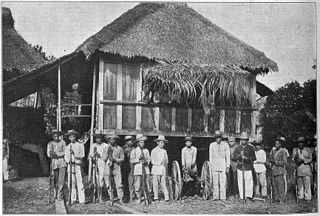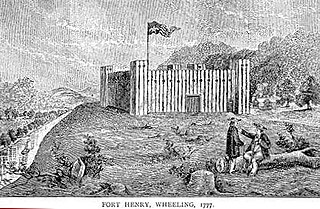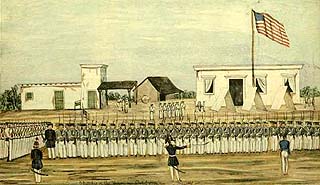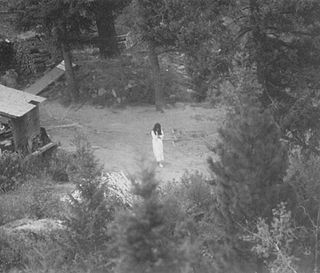 W
WThe Siege of Apia, or the Battle of Apia, occurred during the Second Samoan Civil War in March 1899 at Apia. Samoan forces loyal to Malietoa Tanumafili I were besieged by a larger force of Samoan rebels loyal to Mata'afa Iosefo. Supporting Malietoa were landing parties from four British and American warships. Over the course of several days of fighting, the Samoan rebels were defeated.
 W
WThe siege of Baler was a battle of the Philippine Revolution. Filipino revolutionaries laid siege to a fortified church manned by colonial Spanish troops in the town of Baler, Aurora, for 337 days, from 1 July 1898 until 2 June 1899.
 W
WThe Siege of Bastogne was an engagement in December 1944 between American and German forces at the Belgian town of Bastogne, as part of the larger Battle of the Bulge. The goal of the German offensive was the harbor at Antwerp. In order to reach it before the Allies could regroup and bring their superior air power to bear, German mechanized forces had to seize the roadways through eastern Belgium. Because all seven main roads in the densely wooded Ardennes highlands converged on Bastogne, just a few miles away from the border with neighboring Luxembourg, control of its crossroads was vital to the German attack. The siege was from 20 to 27 December, until the besieged American forces were relieved by elements of General George Patton's Third Army.
 W
WThe Siege of Fort Henry took place from September 11 to 13, 1782, during the American Revolutionary War. A force of about 300 Wyandot, Shawnee, Seneca and Delaware Indians laid siege to Fort Henry, an American outpost at what is now Wheeling, West Virginia, accompanied by a force of 50 British officers and Loyalists from Butler's Rangers. The siege is commonly known as, "The Last Battle of the Revolutionary War," despite subsequent skirmishes between Patriots and Loyalists involving the loss of life taking place in New Jersey later in 1782; though these were more unorganized outbreaks of fighting between patrons with opposing sentiment than engagements between belligerents.
 W
WThe Siege of Fort St. Philip was a battle taking place during the ending of the War of 1812 between a sizable British naval fleet attempting to sail the Mississippi River by force in order to provide reinforcements to British forces already attacking New Orleans as part of the Louisiana Campaign, and the single American garrison of Fort St. Philip guarded by a far numerically-inferior force. The siege lasted from January 9 to January 18, 1815.
 W
WThe Siege of La Paz was a Mexican siege of their own city of La Paz in Baja California Sur. Mexican militia forces attempted to destroy the United States Army garrison, occupying the peninsular town. The siege occurred over a twelve-day period in November and December 1847, at the end of the Mexican–American War.
 W
WThe Allied siege of La Rochelle occurred during the Second World War in 1944–45, when Allied troops invaded France. La Rochelle was an important German naval base on the Atlantic for surface ships and submarines, from which U-boat campaigns were launched.
 W
WThe Battle of Beijing, or historically the Relief of Peking, was the battle fought on 14–15 August 1900 in Beijing, in which the Eight-Nation Alliance, led by the British, relieved the siege of the Beijing Legation Quarter during the Boxer Rebellion. From 20 June 1900, Boxers and Imperial Chinese Army troops had besieged foreign diplomats, citizens and soldiers within the legations of Austria-Hungary, Belgium, Britain, France, Italy, Germany, Japan, Netherlands, Russia, Spain and the United States.
 W
WThe Siege of Plei Me was the beginning phase of the first major confrontation between soldiers of the North Vietnamese People's Army of Vietnam (PAVN) and the U.S. Army during the Vietnam War. The lifting of the siege by South Vietnamese forces and American air power was followed by the pursuit of the retreating North Vietnamese from 28 October until 12 November, setting the stage for the Battle of Ia Drang.
 W
WRuby Ridge was the site of an 11-day siege in 1992 in Boundary County, Idaho, near Naples. It began on August 21, when deputies of the United States Marshals Service (USMS) initiated action to apprehend and arrest Randy Weaver under a bench warrant after his failure to appear on firearms charges. Given three conflicting dates for his court appearance, and suspecting a conspiracy against him, Weaver refused to surrender, and members of his immediate family, and family friend Kevin Harris, resisted as well. The Hostage Rescue Team of the Federal Bureau of Investigation became involved as the siege developed.
 W
WThe Siege of Savage's Old Fields was an encounter between Patriot and Loyalist forces in the back country town of Ninety Six, South Carolina, early in the American Revolutionary War. It was the first major conflict in South Carolina in the war, having been preceded by bloodless seizures of several military fortifications in the province. Patriot forces under the command of Major Andrew Williamson had been dispatched to the area to recover a shipment of gunpowder and ammunition intended for the Cherokees that had been seized by Loyalists. Williamson's force, numbering over 500, established a stockaded fort near Ninety Six, where it was surrounded by some 1,900 Loyalists.
 W
WThe Siege of the International Legations occurred in 1900 in Peking, the capital of the Qing Empire, during the Boxer Rebellion. Menaced by the Boxers, an anti-Christian, anti-foreign peasant movement, 900 soldiers, marines, and civilians, largely from Europe, Japan, and the United States, and about 2,800 Chinese Christians took refuge in the Peking Legation Quarter. The Qing government took the side of the Boxers. The foreigners and Chinese Christians in the Legation Quarter survived a 55-day siege by the Qing Army and Boxers. The siege was broken by an international military force which marched from the coast of China, defeated the Qing army, and occupied Peking. The siege was called by the New York Sun "the most exciting episode ever known to civilization."
 W
WThe First Battle of the Stronghold was the second battle in the Modoc War of 1872–1873. The battle was fought between the United States Army under Lieutenant Colonel Frank Wheaton and a band of the Native American Modoc tribe from Oregon and California, led by Captain Jack.
 W
WThe Second Battle of the Stronghold was a battle during the Modoc War between a band of the Native American Modoc tribe and the Army of the United States, in northeastern California. The battle began on April 15, 1873, and ended on April 17, 1873. The Army succeeded in forcing the Modoc to abandon their fortified position at Captain Jack's Stronghold in the Lava Beds, but failed to capture the band.
 W
WThe Waco siege was the law enforcement siege of the compound that belonged to the religious sect Branch Davidians. It was carried out by American federal, Texas state law enforcement, and the U.S. military, between February 28 and April 19, 1993. The Branch Davidians were led by David Koresh and were headquartered at Mount Carmel Center ranch in the community of Axtell, Texas, 13 miles northeast of Waco. Suspecting the group of stockpiling illegal weapons, the Bureau of Alcohol, Tobacco, and Firearms (ATF) obtained a search warrant for the compound and arrest warrants for Koresh and a select few of the group's members.